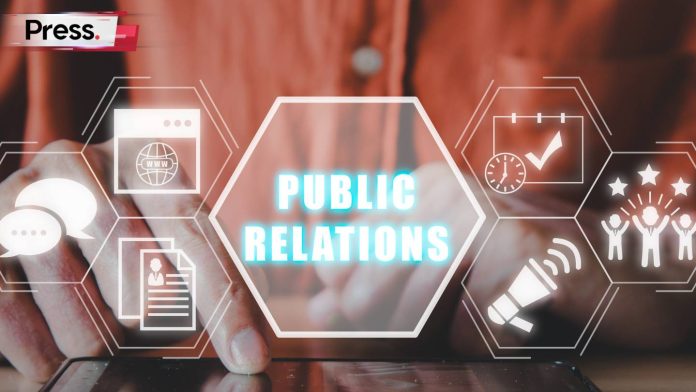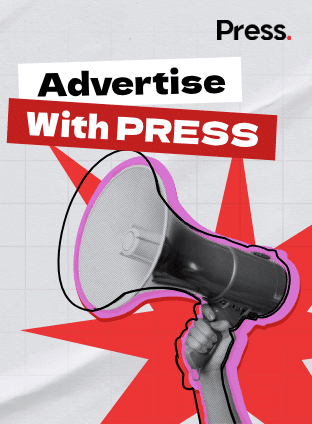Key Takeaways
- Traditional brand messaging often ignores how national policy shapes media tone and public trust.
- The GMH Framework helps brands speak with credibility in Malaysia’s policy-driven landscape.
- It’s built on four practical pillars: Policy Anchor, Public Benefit, Private Collaboration, and Media Framing.
- When used right, your message feels authentic, not forced, not political.
- The goal is harmony: communicating value while staying aligned with Malaysia’s bigger economic and social story.
Table of Contents
ToggleIf you’ve ever written a press release that vanished into the void with no reply from editors or new agency, don’t blame yourself too much!
It’s very common to get ignored by the media when they receive thousands of messages everyday, especially when you have no connections with them.
But the real reason? Your message didn’t fit the moment.
In Malaysia, media coverage and public conversation often orbit around national priorities, Budget announcements, the MADANI Economy, or sustainability goals under the 13th Malaysia Plan.
So when your brand message doesn’t connect to these themes, it can sound detached or tone-deaf, no matter how polished it is.
That’s where a more strategic approach comes in, and the best PR agency in Malaysia will show you how.
Why Traditional Brand Messaging Falls Flat
Traditional corporate messaging tends to focus inward, “our innovation,” “our product,” “our leadership.”
It often assumes audiences will care simply because the company is speaking.
But the problem is, Malaysian readers and editors are filtering every story through context. Their first assumption is:
“How does this connect to what’s happening in the country right now?”
This concept is important to grasp, because relevance and “how it matters to me” is how the media grabs the reader’s attention.
When that link is missing, even a big announcement can feel irrelevant. Editors might skip it. Audiences scroll past to the next news.
The Case for National Alignment
Malaysia’s government has made its direction clear, driving digitalisation, sustainability, and equitable growth through frameworks like:
- Ekonomi MADANI
- Shared Prosperity Vision 2030
- 13th Malaysia Plan.
These policies don’t just shape budgets; they shape editorial priorities.
Outlets like The Star, Berita Harian, and The Edge regularly highlight stories that echo these themes: inclusive economy, corporate governance, AI adoption, SME empowerment.
So, if your brand naturally connects to any of these goals, that’s your doorway into relevance.
And this is where our GMH Framework becomes useful.
The GMH Framework: Government–Media Harmony
Most PR models we learn in Malaysia, whether from university courses or international agencies, are built on Western media ecosystems.
And while those frameworks (like PESO or RACE) work globally, they often fall short when applied to Malaysia’s policy-sensitive, multilingual media environment.
And that makes sense!
No one can create a single PR template that fits every country’s editorial culture or political context.
So, for Malaysia, we needed something different, something that reflects how our media actually works.
That’s where PRESS’ GMH Framework comes in.
GMH stands for Government–Media Harmony, a communications framework designed to help brands tell stories that align with Malaysia’s national priorities while preserving journalistic integrity and brand authenticity.
“GMH isn’t about propaganda. It’s about positioning.”
The idea is placing your brand’s narrative in harmony with the Malaysian story, showing how your work contributes to shared national goals without losing your brand voice.
Why This Matters
- Local context shapes credibility: Malaysian audiences respond better when messages reflect social and economic priorities, not just corporate ambitions.
- Media gatekeeping exists: Editors naturally prioritise stories that connect with public policy or development agendas.
- Public trust is earned through relevance: When your brand message echoes collective progress, sustainability, inclusivity, innovation, it feels authentic.
Example
Imagine you’re launching an AI course in Malaysia for students.
A Western PR approach might headline it as:
“Company X launches revolutionary AI upskilling bootcamp.”
But through the GMH lens, you’d say:
“In support of the MADANI Economy’s digital transformation goals, Company X launches an AI upskilling programme empowering Malaysian students for future jobs.”
See the difference? And we’re not just talking about the title length.
The message is still yours, but it now fits naturally within the national conversation.
The Four Pillars of the GMH Framework
Each pillar of the GMH Framework serves as a checkpoint before you hit “send” on your next press release, pitch deck, or campaign brief.
1. Policy Anchor: Connect to What the Country Is Talking About
In PR, context is everything. Your message gains weight when it sits inside the bigger national conversation, not outside it.
To do this, anchor your communication to government blueprints, policies, or initiatives. Mentioning a recognised programme shows awareness and builds legitimacy.
Examples of current anchors:
- The 13th Malaysia Plan (2026–2030) for digital inclusion, SME empowerment, and sustainability.
- Ekonomi MADANI for human-centred, inclusive economic growth.
- The National Energy Transition Roadmap (NETR) for green investments and carbon reduction.
- Shared Prosperity Vision 2030 for long-term equality and competitiveness.
How it looks in your messaging:
“Aligned with the 13th Malaysia Plan’s digitalisation goals, our project expands access to e-commerce tools for rural entrepreneurs.”
This simple alignment signals you’re part of Malaysia’s forward direction, not just another company selling products.
2. Public Benefit: Show Real Impact on Malaysians
Malaysians connect with human stories, not corporate jargon.
Every brand announcement should answer one key question: Who benefits from this, and how?
Translate your brand actions into relatable, everyday impact. Avoid abstract “value creation” phrases instead, highlight what changes for people on the ground.
Ideas for framing public benefit:
- Jobs created or upskilling programmes launched.
- Cost savings or convenience for households.
- Accessibility improvements for rural or B40 communities.
- Environmental or community health improvements.
Example:
“The programme will help 2,000 B40 students access free digital-skills courses, supporting the government’s goal of inclusive education.”
When Malaysians can see themselves in your story, trust naturally follows.
3. Private Collaboration: Position Yourself as a Partner, Not a Hero
Humility goes a long way. Brands that collaborate,not dominate tend to be perceived as credible contributors rather than loud self-promoters.
Instead of claiming leadership, highlight cooperation. Use verbs like support, co-develop, or enable instead of lead, spearhead, or revolutionise.
Local context:
- Partner with agencies such as MDEC, SME Corp, or MTDC for innovation and training initiatives.
- Work with public universities or community organisations to expand outreach.
- Support national-level events or pilot projects that already have government endorsement.
Example:
“We’re partnering with MDEC and Universiti Teknologi MARA to help young Malaysians gain real-world experience in AI development.”
This shows you’re contributing to Malaysia’s progress, not trying to claim it. Be part of the contribution, not hijack it.
4. Media Framing: Speak the Language Editors Trust
Every journalist in Malaysia reads thousands of releases a week, what makes yours stand out is tone and truthfulness.
Media framing is about using neutral, factual language that fits local editorial norms. Avoid hyperbole, empty superlatives, and phrases that feel imported.
What to avoid:
- “Revolutionary technology set to change everything.”
- “The most advanced product ever seen.”
This is sales talk, the media doesn’t like sales.
What works better:
- “Built to support Malaysia’s growing SME sector through affordable digital tools.”
- “Designed in line with the government’s push for sustainable logistics.”
Add credible proof, statistics, research, or a third-party quote, to strengthen your claim. For example:
“According to data from DOSM, digital adoption among SMEs rose 18% last year. Our solution builds on that momentum.”
That kind of statement reads as journalism-ready, not ad copy and editors appreciate it.
Read more: PR for Startups: How to Get Media Coverage Without Big Budget
Who Should Use the GMH Framework
The GMH Framework isn’t just for large corporations or public agencies.
It’s a versatile model that fits any organisation that wants its message to feel relevant, credible, and connected to Malaysia’s bigger story.
Industry / Sector | Why GMH Matters |
Finance & Fintech | To align product launches and campaigns with financial inclusion, digital economy, and national cashless initiatives. |
Technology & Innovation | To position new technologies (AI, automation, cybersecurity) as enablers of Malaysia’s digital transformation under the MADANI Economy. |
Education & Training | To support government goals for upskilling, digital literacy, and youth employability through partnership-led communication. |
Sustainability & Energy | To align sustainability messaging with Malaysia’s Net Zero 2050, green investment, CSR programmes and the National Energy Transition Roadmap (NETR). |
Healthcare & Wellness | To reinforce messages that echo public health priorities such as accessibility, prevention, and wellness innovation. |
Retail & Consumer | To link CSR or community projects with broader social priorities like cost of living, SME support, or rural inclusion. |
Public Sector & NGOs | To maintain message consistency with national development frameworks while retaining transparency and trust. |
Applying GMH in Practice
Let’s say you are a company who just launched a solar energy project in Sabah, and you want the whole of Malaysia to know.
Using the GMH lens:
- Policy Anchor: Mention Malaysia’s Energy Transition Roadmap or Net-Zero 2050 target.
- Public Benefit: Highlight cheaper electricity and green jobs for local communities.
- Private Collaboration: Acknowledge your partnerships with local councils or NGOs.
- Media Framing: Keep the tone factual, use quotes from experts, not just executives.
When editors read this, they see more than a company announcement, they see a story that fits.
Message that Goes From Alignment to Authority
Effective communication isn’t just about catchy slogans or corporate milestones, it’s about context.
The GMH Framework helps brands find that balance between business goals and national progress. It reminds communicators to:
- Make policy links real and relevant.
- Keep impact human and relatable.
- Maintain a tone that earns trust, not just attention.
When your message speaks in harmony with the nation’s direction, it doesn’t just get heard, it gets remembered.
At PRESS, our digital PR services are built around that very idea. We help brands:
- Turn national alignment into authentic storytelling that editors want to feature.
- Build media visibility across Malaysian and regional outlets through data-backed strategies.
- Optimise content for both Google Search and AI Overviews, ensuring your brand stays visible where audiences are searching.
So if you’re ready to make your brand’s voice part of Malaysia’s larger story, not just another press release, let’s craft a message that connects, resonates, and lasts.
Frequently Asked Question About GMH
What does GMH stand for?
Government–Media Harmony, a framework for aligning brand communication with Malaysia’s national priorities.
Is This Only For Big Corporates?
No. SMEs, NGOs, and startups can all apply the same principles in their PR or CSR messaging.
Does Aligning Mean Agreeing With Everything?
Not at all. It’s about relevance and shared benefit, not endorsement.
How Can I Start?
Identify one policy that connects to your brand, and use the four GMH pillars to frame your next announcement.
How Does Digital PR Support The GMH Framework?
Digital PR amplifies GMH-aligned stories across online media, news portals, and search engines, turning government-linked narratives into long-term visibility and SEO authority.
What Type Of Brands Benefit Most From GMH-Driven Communication?
Any brand operating in regulated or policy-linked sectors, like finance, sustainability, tech, or education, benefits most because alignment builds credibility and improves media acceptance.


